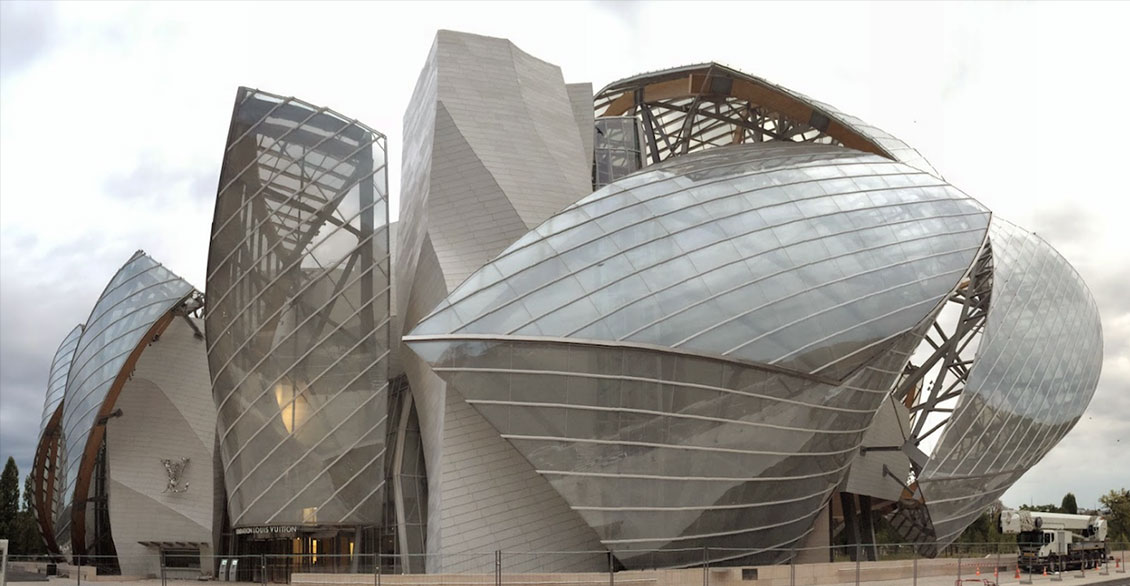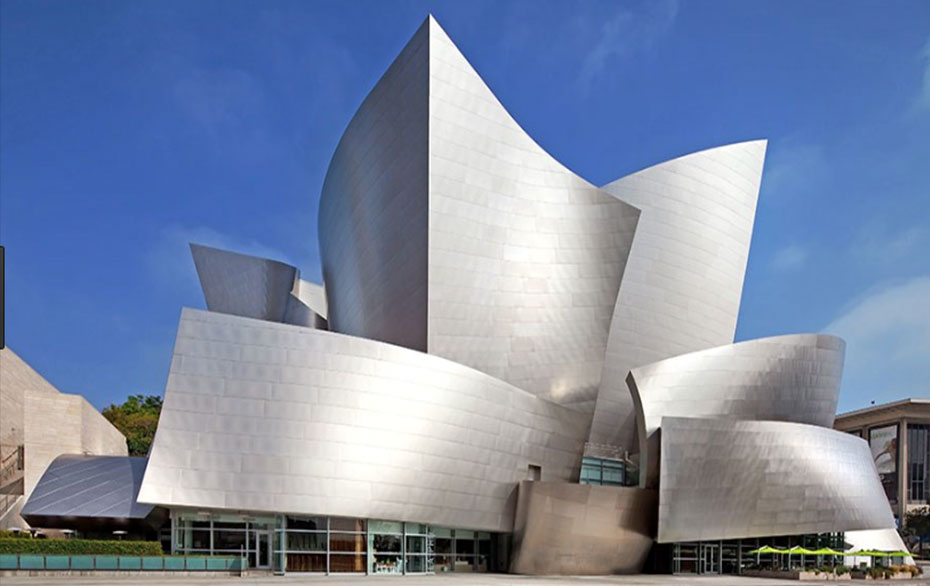DISCOVER MORE ...
FACADES NOW AND THE PATH FORWARD
THE CURRENT STATE OF CONSTRUCTION
The challenges presented by materials, geometry, complexity, efficiency and environmental responsibility have been met with determination and success. In contrast to the past, designers are now compelled to involve contractors and fabricators very early in the design process and the increasing utilization of Design-Build teams is testament to this.
Even so, significant challenges remain.
The following issues continue to present encumbrances to further development:
SUPPORT STRUCTURE
- The predominance of complex and expensive support structures.
- Difficulties experienced in achieving accuracy due to the fabrication methods used to create them.
- The impact of the support structure on final fit and finish of the cladding.
SURFACE MATERIALS
- The detrimental aesthetics of visible fasteners.
- Deformation of cladding materials (e.g. “oil-canning”, ripples, bow and flatness issues, indentations from fasteners etc.).
- Panel surface geometry (shape issues).
- The availability of materials capable of conforming to the geometry required.
- Accuracy of joint widths.
- Control of “panel to panel” relationships in the x,y and z directions.
INSTALLATION AND ERECTION
- Difficulties accommodating the tolerances of the supporting structure in the field.
- Effects of building settling and movement on the visible surface both during and after installation.
- Difficulties with layout and positioning on site due to the lack of flat surfaces, corners or other linear geometric features available for reference.
- Lack of adjustability of cladding components during installation to accommodate all the above.
TO SUMMARIZE:
- The support structure has been the primary focus in the execution of a buildings’ surface geometry.
- Often, more time and cost is expended on the support structure than on the cladding materials themselves.
- The final fit and finish of the cladding and the accuracy of the surface geometry is heavily dependent on the quality of the support structure and its installation.
- There is an ongoing need for improved capabilities in all aspects of execution.


THE PATH FORWARD
In order to achieve a higher level of fit and finish without increasing total cost, the support system must be simplified and more resources allocated to panel fabrication.
Cladding design needs to work from the outside in, rather than from the inside out!
By rethinking cladding systems so that the control of the surface geometry becomes the primary consideration, and by taking advantage of new fabrication techniques and measurement systems, a higher standard of finish can be achieved for a similar or reduced cost.
Below is a summary of the advantages afforded by a new approach.
| Issue | Solution | Benefit |
|---|---|---|
| Visible fasteners | Attach to the rear surface | Creates smooth clean surface Eliminates localized deformation under fastener head |
| Panel deformation | Select materials and thicknesses to suit geometry and flatness simultaneously | Minimizes or eliminates buckling and deformation. |
| Joint and panel edge accuracy | Control all panel edges accurately Control panel to panel relationship accurately | Eliminates edge misalignment and ensures accurate relationship between adjacent panels |
| Accommodate design joints and reveals | Allow joint locations to be independent of support structure | Design joints remain accurately controlled and located regardless of support structure |
| Cost and complexity of support system | Put accuracy into the panel and remove the need for accuracy in the support | Improves panel surface quality Reduces complexity of support structure |
| Lack of accuracy in support members | Avoid roll forming where panel alignment is affected and use straight components whenever possible | Improves panel surface quality Reduces complexity of support structure |
| Materials and Panel surface geometry | Select materials and thicknesses applicable to the geometry Where necessary alter materials as required | More efficient use of materials Where geometry dictates, use alternate materials |
| Layout and positioning | Provide a means of referencing panels Use 3D positioning system to locate supports and panels during installation | With improved panel accuracy, location and layout is simplified Improves accuracy and simplifies installation |
| Lack of adjustment | Incorporate adjustment into attachment system | Allows adjustment, improves accuracy, simplifies installation |
THINK DIFFERENTLY:
By prioritizing the appearance of the panel surface and working inwards toward a support structure, we re-focus our attention on the best means of achieving a more accurate surface geometry and a better looking building. This approach presents new opportunities:
- It prioritizes the designers’ intent; surface geometry is the primary consideration.
- Since different materials provide different physical, mechanical and performance capabilities some of which may be advantageous or even essential toward achieving a particular geometry, the design of the support structure must be subordinate. Accordingly, design of the support structure must occur after determining the best method of achieving the surface geometry.
- We can take advantage of the latest fabrication technologies and software developments.
- We place a new emphasis on the development of alternate cladding materials or technologies.

